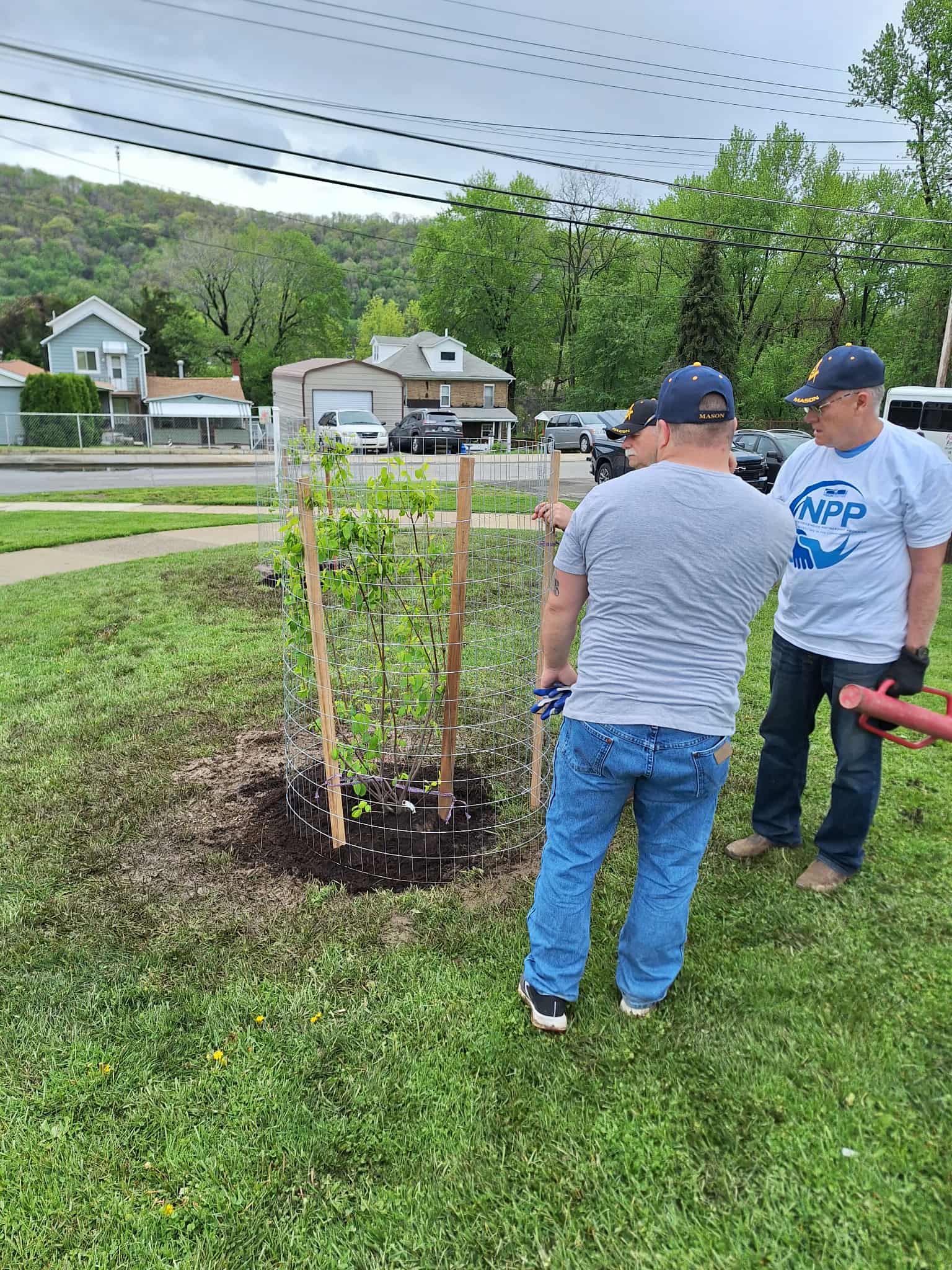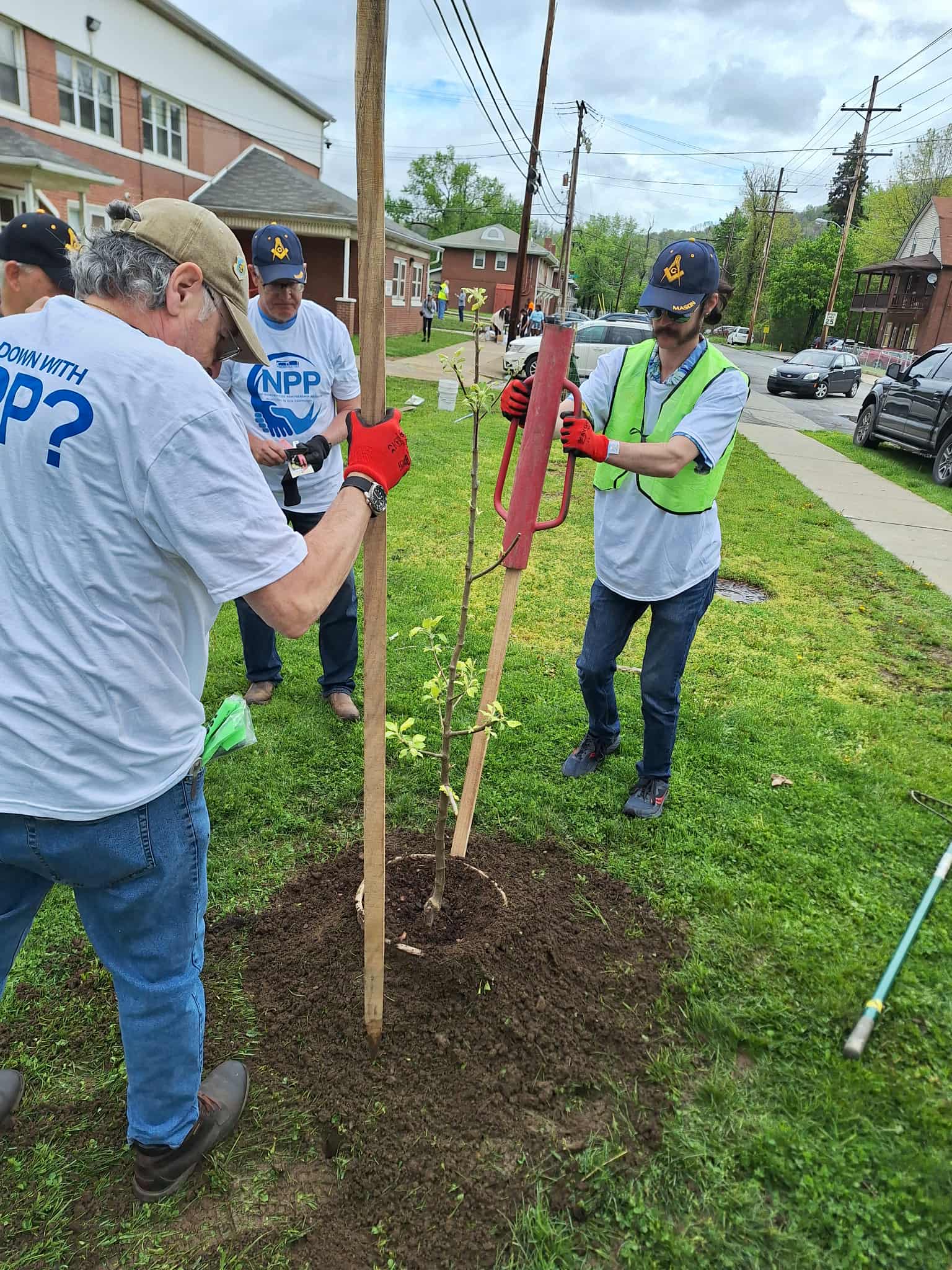Greater Johnstown Lodge Opens Doors to Growth
Freemasonry came to Johnstown, Pennsylvania – a small city located about 65 miles from Pittsburgh – in 1854 when Cambria Lodge No. 278 was constituted.
By 1875, the lodge’s membership had grown large enough that a second lodge was constituted, Johnstown Lodge No. 538.
Both lodges met at various locations until 1885, when they rented Alma Hall, Johnstown’s first four-story building.
In 1889, Johnstown was the scene of one of the worst floods in U.S. history. Six members of Johnstown Lodge perished in the flood, which killed 2,209 people. Alma Hall was one of a handful of buildings to survive.
Johnstown Lodge had its greatest growth during the periods following World War I and World War II. While there had been only two Masonic lodges in Johnstown when Alma Hall opened, by 1925, there were four lodges and roughly 6,000 members.
The growing membership required a new building of its own. A Temple Association was formed and in 1929, approved the construction of a temple. The cornerstone was laid on Nov. 14, 1931. Johnstown Lodge’s first meeting in the new temple was held in 1934.
Johnstown Lodge celebrated its 100th anniversary in 1975. In the 1970s and 80s, Johnstown suffered economically as the steel mills and coal mines shut down. The city could no longer support four Masonic lodges.
As a result, Conemaugh Valley Lodge No. 692 and Sunnehanna Lodge No. 742 merged with Johnstown Lodge No. 538, creating what today is known as Greater Johnstown Lodge No. 538. Cambria Lodge No. 278 also remains active.
Greater Johnstown Lodge prides itself on the high caliber of degree work conducted by its officers. The lodge has actively assisted the Grand Lodge of Pennsylvania through one-day Masonic Journey classes conducted in 2004, 2005, 2010 and 2016.
The 100-year-old Johnstown Masonic Temple, known today as the Johnstown Masonic Event & Conference Center, remains a popular staple in the community, as Johnstown’s only full-service wedding and events venue, in addition to the lodges’ home.
As Greater Johnstown Lodge prepares to celebrate its 150th anniversary, it’s working through the challenges that most lodges face today: an aging membership coupled with increasing financial expenses, said Brennen Stiffler, Worshipful Master.
“We are always working to attract men of good character to our fraternity,” he said.
Today, lodge membership hovers around 300 brethren.
“It’s a good group of people,” Brennen said, noting that only about 10 to 20 brothers regularly attend lodge meetings, a number he is trying to increase. “A lot of the older guys moved out of the area, or they work and can’t make meetings,” he said.
Brennen joined the fraternity about eight years ago at age 19. Shawn Stiffler, Brennen’s father, joined the fraternity at the same time, and the pair went through the degrees together. Today, Shawn is a trustee of the lodge and President of the Masonic Temple Association.
Greater Johnstown Lodge has been working with Vision Together 2025 (a nonprofit, collaborative organization bringing community resources and residents together to revitalize the greater Johnstown community) to plant a variety of fruit trees in the area. The lodge is looking to partner with other organizations to make more of a difference in the community.
“There has been a big jump in community engagements,” Brennen said. “We are also in the process of making a memorial brick path [at the temple] to honor those brothers who are deceased, from military to first responders to relatives,” he said.
Greater Johnstown Lodge has also increased its social media presence, creating Facebook and Instagram pages in 2010. The Facebook page, featuring Masonic events and activities, has about 1,300 followers.
“We are working to see what we can do with the other eight lodges in the district,” Brennen said.
A “Mason’s Night Out,” held once a month, involves brothers getting together outside of lodge meetings with their wives to relax, eat and enjoy conversation, Brennen said.
Brothers recently replaced an old square and compasses sign on the third story of the building that had caught fire with a new LED one that is more visible.
“So many people drive past our building and think it’s a church,” Brennen said. “They don’t take the time to stop in. We are working with other Masonic bodies, getting our roots and starting to branch out … we want to rebuild the presence from when we had thousands of members after the lodges merged, and we were all booming.”
The temple, at nearly a century old, is starting to show signs of wear and tear, Brennen said. The building houses an 8,000-square foot ballroom, an Egyptian-themed room that is original from the 1930s and another room set up like a “medieval castle,” with wood beams and slate floors. A small museum and library showcase Masonic artifacts from the lodge’s extensive history.
“A lot of people have come in here over time, or they leave Masonic items to us when they pass away,” said Brother Pete Bobak, the building’s manager. “We’re just trying to preserve everything.”
Pete joined Greater Johnstown Lodge in 2012, and said at the time, there were a lot of older members. Within the past five years, younger Masons have started to join and are looking to revitalize the lodge, he said.
“You get one or two people to come in and then they bring their friends in,” Pete said. “The younger ones seem to be really involved, moving through the chairs, helping and bringing new ideas. It seems to be working.”
Since the building is in relatively good condition and original from the time it was built in the 1930s, members of Greater Johnstown Lodge worked with city and state officials over the summer to secure a National Historic designation for the Johnstown Masonic Event and Conference Center.
“This will open a lot of doors for us,” Pete said. “I would like to open the building up more to the public. We have some tours, like teachers will ask if they can bring their history classes over. But we could do more. The building is all original hardwood floor and architecture. It was built for the community. That’s what it should be used for.”




